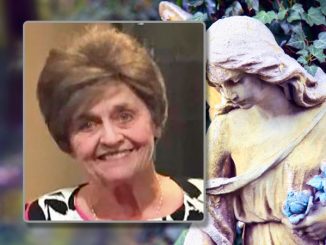
The LSU AgCenter Burden Center is moving forward with its plans to become more of a Baton Rouge destination than just a research station through the help of private donations.
This unique facility consists of 440 acres of green space in the heart of Baton Rouge and conveniently located off Interstate 10, according to LSU horticulturist Jeff Kuehny.
“The property was donated by the Burden family to the LSU Agricultural Center and LSU A&M beginning in 1966.”
The center reflects the past, present and future of agriculture in Louisiana. The LSU Rural Life Museum represents the 18th and 19th century plantation era in Louisiana history while the present and future are represented by the LSU AgCenter’s Burden Center, Kuehny said.
The vision stipulated that the property be a “green area” to be enjoyed by the public and used to conduct horticultural and agronomic research, showcase the museum, formal and informal gardens, and an urban forest.
“Today, the Burden Center comprises many of those elements, which include horticulture and crop research, the All-America Rose Garden, the All-America Selections Garden, the Steele Burden Memorial Orangerie, the Ione Burden Conference Center, Burden Woods, Trees and Trails, the Barton Arboretum, the Stone Camellia Collection, Windrush Gardens and the LSU Rural Life Museum,” Kuehny said.
New features at Burden include a new entry road and trail network – Trees and Trails – to tie the site together and create an easily navigated road and trail system for visitors.
“Plans include a building for the LSU AgCenter’s East Baton Rouge Parish extension office, a new conference center, three children’s gardens, an herb and heritage garden, a culinary garden, the Louisiana Garden Center and an educational center for local and state horticultural organizations,” Kuehny said.
The ornamental and turf research facility will expand its scope to include wetlands research. The woodlands on the east side of the property will be designated as a preserve and used for research in urban forest restoration and education.
“Through the fields and down the oak alley, the road will continue to the LSU Rural Life Museum and historic Windrush Gardens, leading to the Barton Arboretum,” Kuehny said. “Plans also include expanding the Barton Arboretum to feature cultivated specimen woody ornamentals.”
Trees and Trails, with a trailhead behind the Steele Burden Memorial Orangerie, will continue through Burden Woods, which is home to forestry and environmental research and education activities.
This trail system will connect to the Barton Arboretum with a new boardwalk over the Black Swamp, a rain-fed wetland composed of 200-year-old tupelo trees.
Additional plans include a connecting trail and boardwalks that will overlook a 10-acre wetland observed from Burdens Bluff and continue along Wards Creek.
The Burden Horticulture Society, a friends group, was formed in 2007 to enhance and promote Burden Center for public benefit through educational programs, fundraising and volunteerism.
The East Baton Rouge Master Gardeners, Baton Rouge Camellia Society, Baton Rouge Herb Society and Baton Rouge Bonsai Society all help support various outreach opportunities at Burden Center.
Through the support of these organizations, the LSU AgCenter, the Burden Foundation and the LSU Foundation, Burden Center is moving forward with a capital campaign called, “A Destination for Generations” to provide funding to continue to enhance the facility.
For more information on this capital improvement project, contact Gigi Gauthier at 225-763-3990.




Be the first to comment